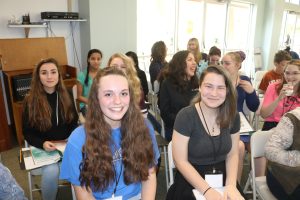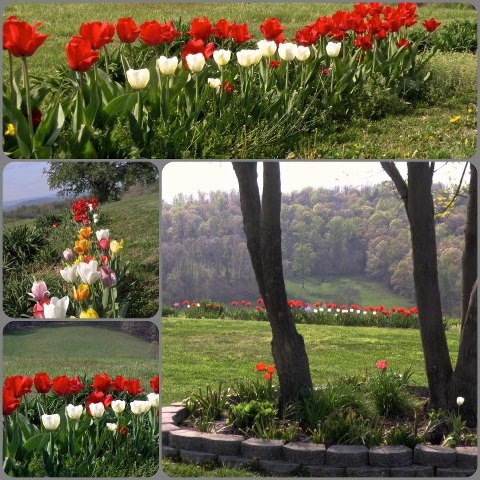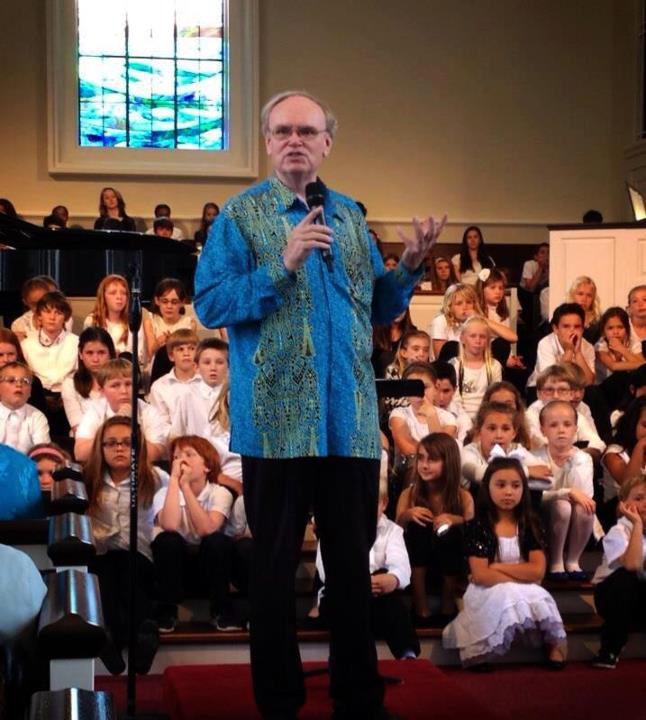
Last weekend was a busy time for YouthCUE’s San Antonio Youth Chorale (SAYC). Our first rehearsal of 2017 was held on the afternoon of January 15, and then we turned around the next day on the Monday MLK Holiday and held a four-hour retreat.
On Sunday, the singers and parents piled into the rehearsal hall for orientation, and then we launched headlong into eight new anthems which will be memorized by the Baylor Festival of Youth Choirs held February 24-26. Monday morning at 10am we were back in the rehearsal hall getting serious about music learning and memorization. By mid-afternoon we had put in three hours of productive rehearsal and had enjoyed lunch and some informal play time together. By 2pm, everyone was headed home. The students’ spirits seemed high, and we adults, though weary, were elated.
I have said it for years, but it bears repeating yet again: “High school students will learn and memorize music as quickly as we can teach it to them. The only limiting factor is my ability to competently teach it.” If I will come prepared and work the music creatively, the students will get it into their heads and voices at warp speed. The onus really is upon me, the director. Any slowness on their part is a direct result of my lack of rehearsal skills.
So, this weekend, the energy was high. We sought to waste no time but to also keep the pace of the rehearsal reasonable so as not to cause the students to feel rushed, pushed, or panicked. The musical progress of the group was substantial on those two concentrated, consecutive days. The groundwork has now been laid to put the group of 38 singers within striking distance of the Baylor repertoire.
We sometimes hear a lot of complaining from directors, lamenting that “today’s students” are not as good, musically sharp, or motivated as the kids of yore. Many of us remember good old days in the 90s or 80s or 70s when it seemed the students were better singers and more on task. Frankly, I believe our memories are playing a mean trick on us.
As I carefully watched the SAYC students last weekend, it dawned upon me that these adolescents are just as talented, just as hard-working, just as focused, just as motivated by excellence as any teenagers I have ever directed. With four solid parts and a balanced sound (which is amazing considering that we don’t recruit particular voice parts, just interested students), this group had as beautiful and balanced a sound in the first two rehearsals as any youth choir ever assembled on my watch.
So, how did that happen?
What may not have been obvious to the casual observer is the amount of advance work done to prepare for this rehearsal and, indeed, for this season. The hours are actually incalculable, because this season of SAYC has been “under construction” for several years now. In previous seasons, we have been working, making mistakes, learning from those mistakes, and seeking to remain steadfast in what we offer the students. We have been called upon by our circumstances to maintain a nearly miraculous balance between predictability and flexibility. It’s been hard work, and there is still a long ways to go. We have not yet begun to “arrive” (do we ever, really?) but we are also well beyond our earlier starting blocks.
We have come to understand that students, once on the property, are motivated by essentially the same things today as they were ten years ago, twenty years ago, even thirty years ago. These things are fellowship, a sense of safe belonging, being a part of something bigger than just ourselves, excellence, beauty, and meaningful community service (ministry). What has had to change has been the “attraction” that gains their initial attention and gets them into the doorway.
For instance, we allow the students to earn the cost of their trips through faithful attendance, good attitudes, and teamwork. We have figured out a way to provide a few special college scholarships for seniors who express the best leadership in the group. We seek to provide first-class musical experiences by sometimes having SAYC accompanied by professional chamber orchestra. We provide little extras for the students to help them feel special, individually as well as corporately.
And there’s something else emerging here. We are discovering that nothing provides new energy for a group of singers more than new blood, meaning new students, new singers. Many a youth choir seems to stagnate and die on the vine when we have the same 10, 2, and 4 students. Yes, absolutely, faithfulness and “return traffic” is very important to the building of a youth choir, but so is a steady stream of new singers. Just as a university athletic or arts program is highly dependent upon its success in recruiting, a dynamic youth choir must recruit teenagers, as well. When we work hard enough for long enough, we will reach tipping points where the group gains a critical mass necessary for real sustained growth. Reaching that critical mass will be high significant, because it is at that point that the students themselves are doing as much recruiting as the adult leadership. As much, but never more.
Before long, there may be a book from YouthCUE Publishing describing the beginnings and development of the San Antonio Youth Chorale. It is a truly new model for reaching students with the ministry of youth choir. There are many models that will likely reach students today, but particular one model is quickly headed down the drain; that model is business as usual.
We will be sharing more of the SAYC concept in hopes that it will inspire many of us to try our own creative versions of youth choir in a new millennium. Through the website blogs, the monthly e-newsletter, and at the 2017 YouthCUE Roundtable next fall (September 17-19, 2017 in San Antonio), much more will be shared. Stay tuned as we all learn from one another.
Randy Edwards









